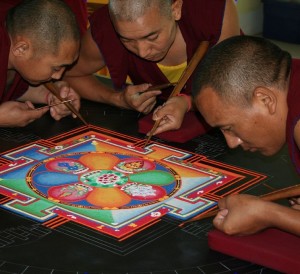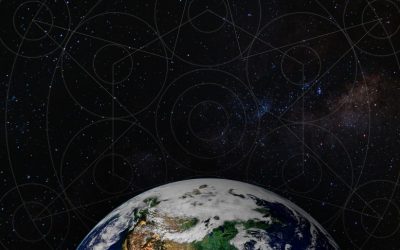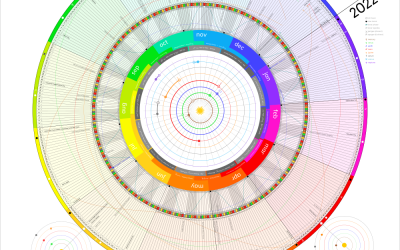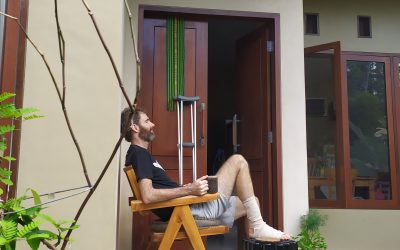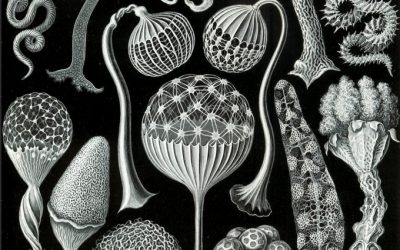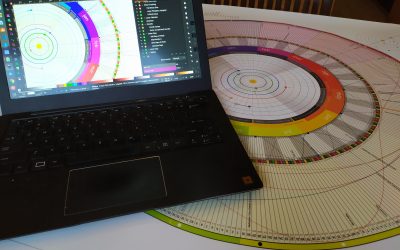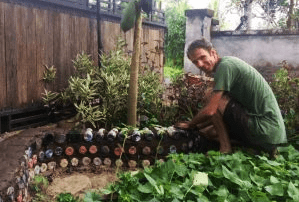We live in a planetary momentary rife with pandemic inequality and eroding ecologies– from poverty to ecosystem collapse. All are caused by centuries of unconscious creation as our ancestors have followed, until the end, the principles of our ancient religions. Yet, here in lies our salvation– for beneath the withered husk of archaic paradigms lies a uniting spiritual tradition of vast untapped power. The mandala.
It was Carl Jung, in the 1920’s who first observed that the art of religions, tribes and cultures around the world have one thing in common: they fall back on circle geometric patter to express their hopes and dreams. He recognized that ‘mandalas’ (from the Sanskrit word for circle) were the tip of the iceberg of our “collective unconsciousness”. Whether it is the giant circular monolith of Stonehenge, the rose windows of a cathedral, or the sand paintings of Tibetans, mandala making unites us all. Consistent symbols and numerologies find their way into these mandalic creations across the chasm of culture and continents.
But much more than mesmerizing, mandalas are a circular web for which we can weave meaning, symbols and, perhaps most of all… intention.
I’ve journeyed around the world to visit and learn from the mandalic traditions of our ancestors. As a professional artist I made my own mandalas, taught mandala making, then lead countless collaborative mandalas. Working with individuals, to couples, to groups, to collectives of thousands, I’ve discovered that underneath the aesthetics of the mandala, lies a set of fundamental principles that we can apply to a collective rise in consciousness. Using the principles of the mandala to guide collaborations can lead not only to incredible real world co-creations, but to the fundamental shifts in paradigm that turn problem and crisis into solution and opportunity. As the old saying goes, ones man’s trash is another’s treasure.
What makes mandalas so potent is precisely their ability to raise consciousness. Carl Jung was one of the first to use mandala making with his patients as a means of psychotherapy and self-discovery. By reviewing a mandala made by a patient profound insights could made gleaned, by both the patient and the practitioner. Jung was awed by the results. Likewise, I’ve been awed by the results. The simple process of mandala making inevitably leads to personal and collective insights. In a group it generates a web of energy that quickly ascends to much more than the sum of its parts. In the group mandala making workshops that I have led around the world I have watched as collaborations turn magical: a group of people can come together, often strangers, and make something so beautiful and harmonic, they are all blown away.
Living in the remote villages of the Igorot people in the Northern Philippines, I had the experience of making mandalas from trash. When making mandalas with village schools, since there were no art materials or facilities around, we used what was in abundance. Wrappers and plastic! What had been useless before, littered and burned became a dazzling media to create. The village was a little cleaner after we gathered our art material, and the mandala that we made together from clipped and cut shiny wrappers, changed not just our perspective, it changed my life.
I realized that the question is no longer what we are going to make a mandala with (in the past it was stones, paint, tiles and temple). The question is first, what intention shall we craft? What problem do we want to transform? What kind of perspective and principles do we want to propel?
In Tibet, a group of monks will work together in silence to craft a mandala from grains of coloured sand. The mandala would be crafted around a specific, well considered intention: perhaps a blessing for a new temple, or a call for peace. After a prayer, the monks would work from the centre outwards. Because a mandala unfolds in a coherent geometric pattern, each monk can sense intuitively where next to add to the pattern. As the mandala expands, additional monks can then join in without any need for speaking– the coherence of the circular geometry is such that it is clear where one can join in, and contribute, to the unfolding.
When a mandala’s intention is shared by many– let’s make something beautiful, let’s clean up the community, let’s solve pollution– then many will join. The potential for vast collaboration is set.
By designing collaborative intentions that propel principles, we can tap the vast co-creative potential of a united movement. Using globally consistent ‘trash’ as the building blocks, folks around the world, can share the same process of transmutation to treasure. A mandala of collaboration unfolds. Through the innumerable trials and errors of the collaborators and ideal design begins to unfold that no one person could ever have imagined on their own.
I had the accidental honour of experiencing such a phenomenon first hand. After making some trash mandalas in the villages around me, I stumbled on the technique of making ecobricks. A simple, low tech concept– packing plastic into a bottle– anyone could do it. The fact that it cleaned up the community, and solved pollution, meant that it resonated with the intentions of many. I began in my home to ecobrick (the centre). I shared it with the school in my village (the first circle). I then shared it with the schools around the area (the next circle). Those schools then began to share it with other schools (the first iterations). Before we knew it, the movement had spread far and wide. Within a year several hundred schools were ecobricking. Within two years, thousands.
More of my writing on Mandalic Collaboration and Regenerative Design Philosophy
[fbcomments]
Steemit Upvote:
My Recent Posts
The Facebook Quandry
I've never really felt comfortable posting on Facebook. Like most of you, I am only there because you are there-- because of 'network effect'.. It is certainly not because I resonate with the vibe of Facebook or its ethos. Over the last years, this unease has grown...
2022 EarthCycles Calendar Launched 🎉
Well, my work on this has been delayed because of my accident, but I am excited that the second version of my EarthCycles calendar project is at last ready! 🎉 This project goes back over a decade to my days painting landscapes in Northwestern Canada, as I tried to...
Busted Moment
Crossing the street in my neighborhood a month ago, I got hit by a motorcycle. If you haven’t heard from me for a while, well… that would be why. I’ve been down and out, taking a break, with a break. My leg was badly broken, among some other bumps and bruises. The...
Earth Ethic No. 6… At long last!
At last-- it's up. After two months of steady revisions the six earthen ethic essay is published on Medium. This wasn't just any essay. This was the laying out of an ecological ethic. It wasn't just about my writing, but about my living too-- a deep dive into my...
The New Year Unfolds
Who says we need only see time through the lens of one calendar system that two thousand years old?! The other day, I printed a major new version of the EarthCycles calendar. I am really excited about the unfolding 2022 version! Neptune and Uranus included this...
What are Mandalas?
Mandalas are an ancient and sacred art that can be found in cultures and religions around the world. Mandalas harness circular geometry and symmetry to create a pattern filled with meaning, symbolism and intention. More on Mandalas >
My art, designs and collaborations are inspired by three great personal journeys. First, I spent a decade developing my artistic trajectory– which culminated in two years traveling by bicycle making mandalas and visiting great mandalas of the world along the way. Second, I spent four years living amongst the Igorot people of the Filipino Cordilleras, absorbing the profound wisdom of their culture that has enabled them to live in harmony with the ecosystem around them. Third, my journey through deep relationships experiencing the power of what Babara Marx Hubbard calls “suprasexual cocreativity”.

